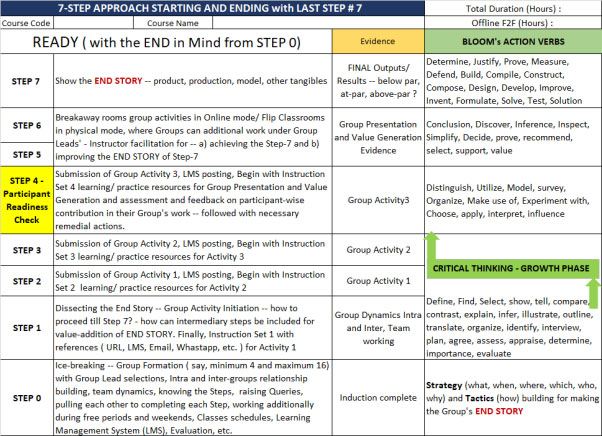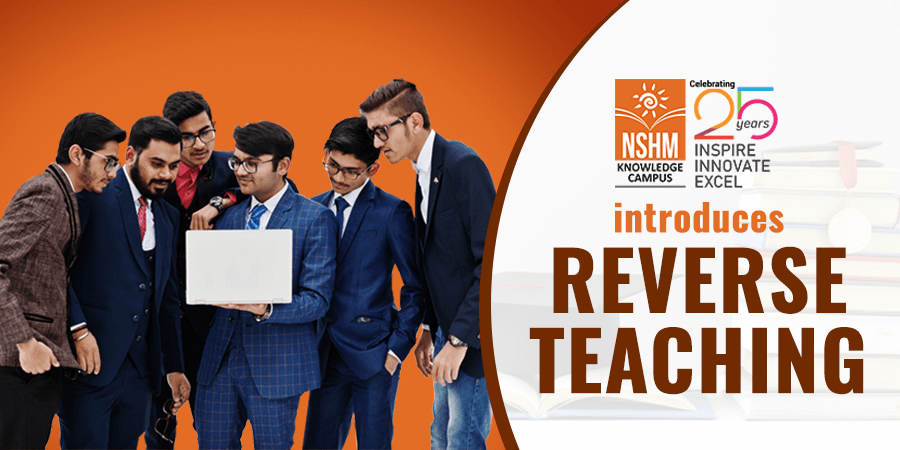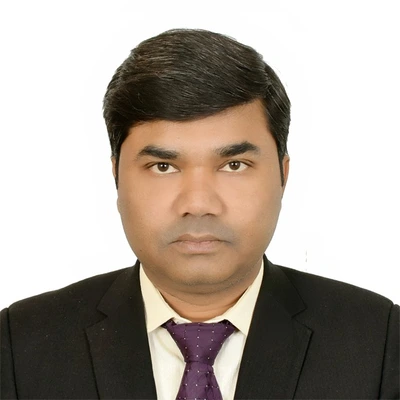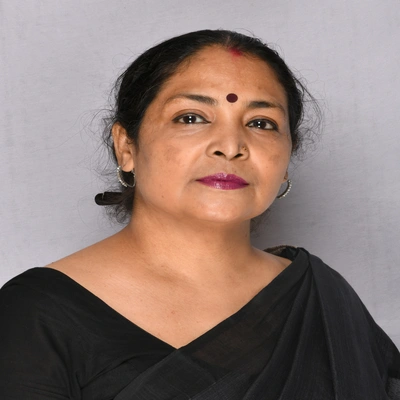NSHM introduces Reverse Teaching
REVERSE: THE NEW FORWARD
There have been some remote pieces of evidence on Reverse Teaching. That is what the google search concludes. Particularly, the kind of Reverse Teaching that NSHM has introduced is novel. It involves 1500 odd students across UG and PG programs of NSHM under interdisciplinary cohorts for the purpose of extended learning for multidisciplinary insights. The details are illustrated ahead.
Firstly, let us understand the prevalent concept of reverse teaching. In the study published titled Reverse Teaching: Exploring Student Perceptions of Flip Teaching. Active Learning in Higher Education, by Nguyen, Bang & Yu, Xiaoyu & Japutra, Arnold & Chen, Cheng-Hao. (2016), it is posited to be a model of the future due to increasing technological availability in education. Where the aforementioned authors explored the students’ perceptions based on a limited set of in-depth interviews (28) on the three dimensions of preparation, interaction, and outcomes, in the understanding of reverse teaching. For some others, Reverse Pedagogy is part of cooperative education where students are called upon to exchange and discuss together in order to build their knowledge. Besides, Inquiry-based learning and Flip are also considered to be forms of active learning that start by posing questions, problems, or scenarios. It contrasts with traditional education, such models of teaching generally are more student-facing and not limited to the teacher presenting facts and impressing their own knowledge about the subject. No doubt, they are forward-looking!
THE NSHM MODEL WITH REVERSE
There has been a plethora of good teaching-learning experiments worldwide that had delivered outcome-based education. Where the urge is to engage the learners and to provide them with useful experiences. For example, flipping students to learn at their own pace and offering a project-based or problem-based learning system have been a part of NSHM Education. In terms of Reverse Teaching, NSHM has a 7-STEP model based on mixed approaches of reverse-engineering, lean, and query-based learning among other proven and our own experimental approaches. The early signs have been quite encouraging. The shifting has been from a wholly individual focus to an intra-group and inter-group focus. The groups were sub-sets of an interdisciplinary batch and they comprised an interdisciplinary mix of undergraduate and postgraduate students. The evaluation, therefore, will be group-based, where the group as a chain will be ‘evaluated’ to be as good as its weakest link (group member). The following illustrations are self-explanatory for reference.


The 7-STEP model is basically to add more focus on making the END STORY better. It might not make all learners in the groups wholly active but it is expected to have a positive rub-off as far as preparing a willing mindset of a tardy or inactive participant is concerned for the next such instance, with a different mix and a different END STORY.
END NOTE
Inarguably, no education model can guarantee that participants will be able to shift from a focus state to a hyper-focus state of flow (Mihaly Robert Csikszentmihalyi), which is a highly focused mental state conducive to productivity. Where the participants can be trained to be completely immersed in a task, to a point where they completely ignore or tune out everything else. It might interest education researchers of positive psychology or researchers who are working in the context of autism, schizophrenia, and attention deficit hyperactivity disorder – conditions that have consequences on attentional abilities. Whether such a model can be possible with advanced human-computer interactions only the future can say. Till then, models like NSHM’s Reverse Teaching can be a stepping stone for higher quality education.
ACKNOWLEDGEMENT
This is to acknowledge the work of NSHM Instructors, namely, Professors – Pralay Ganguly, Prosenjit Ghosh, Mayank Jain, Sanjay Pal, Pratyay Ranjan Datta, Tulika Bhattacharjee, Ankita Choudhury, Saibal Chatterjee, Suman Bandyopadhyay, Avik Ghosh, and Rina Mitra in line with the NSHM’s Reverse Teaching model implementation for Choice Based Extended Learning. Besides, to mention the active involvement of NSHM’s Portals and their coordinators, Professors – Biswajit Mondal, Soma Hazra, Tania Chakraborty, Isita Chakraborty, Kanika Kundu, Sanchita Sarkar, Joydeep Banerjee, Mithun Guha, Sharad Seth, and Jayanta Das. Not to mention the regular participation by active students in such non-credit extended learning.







